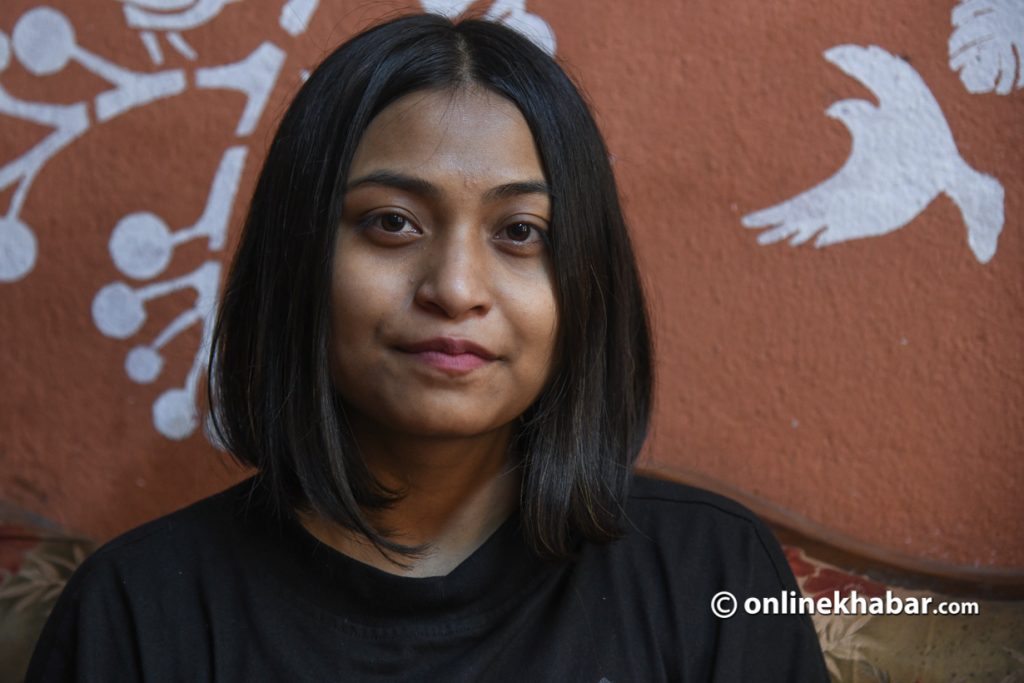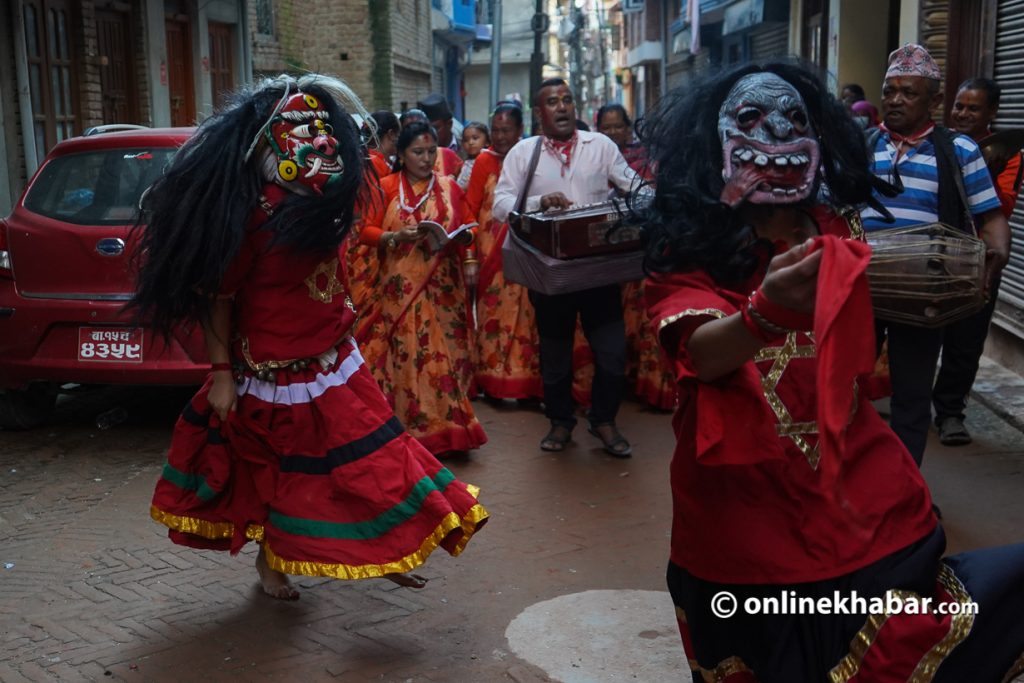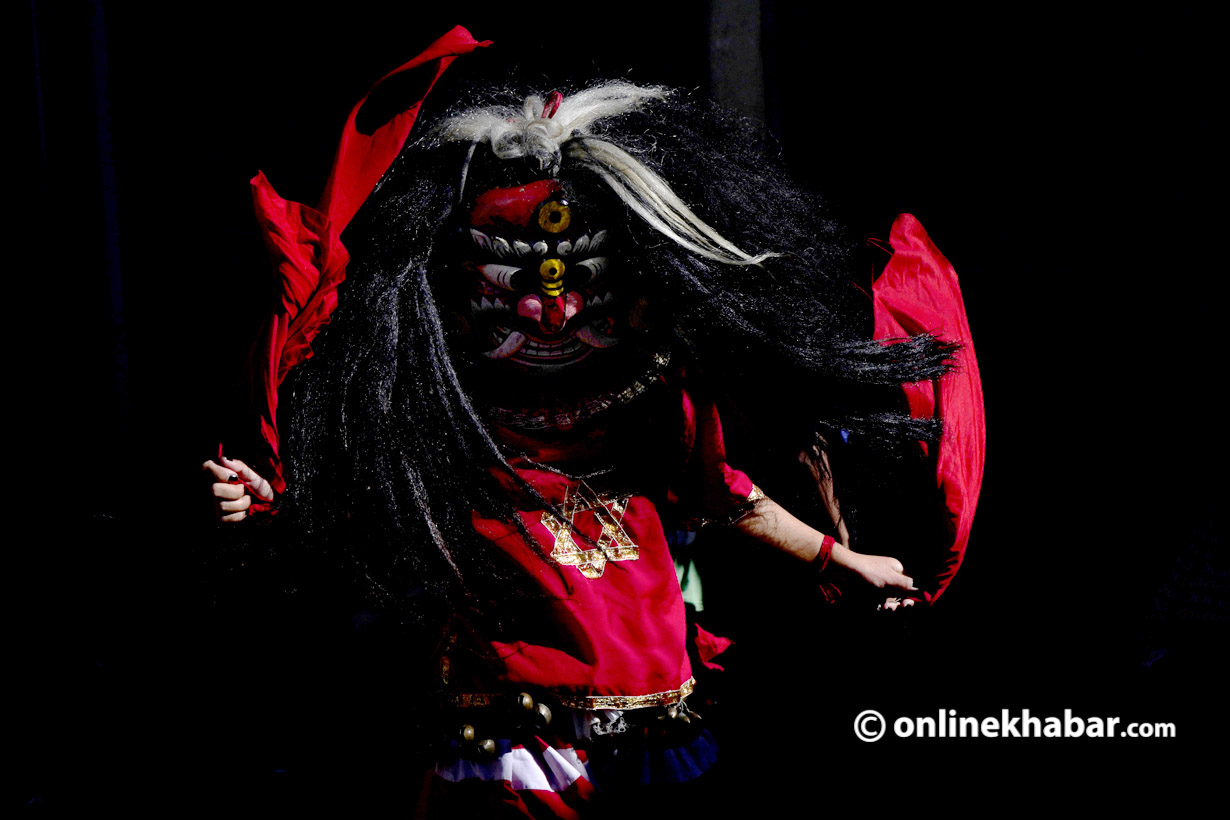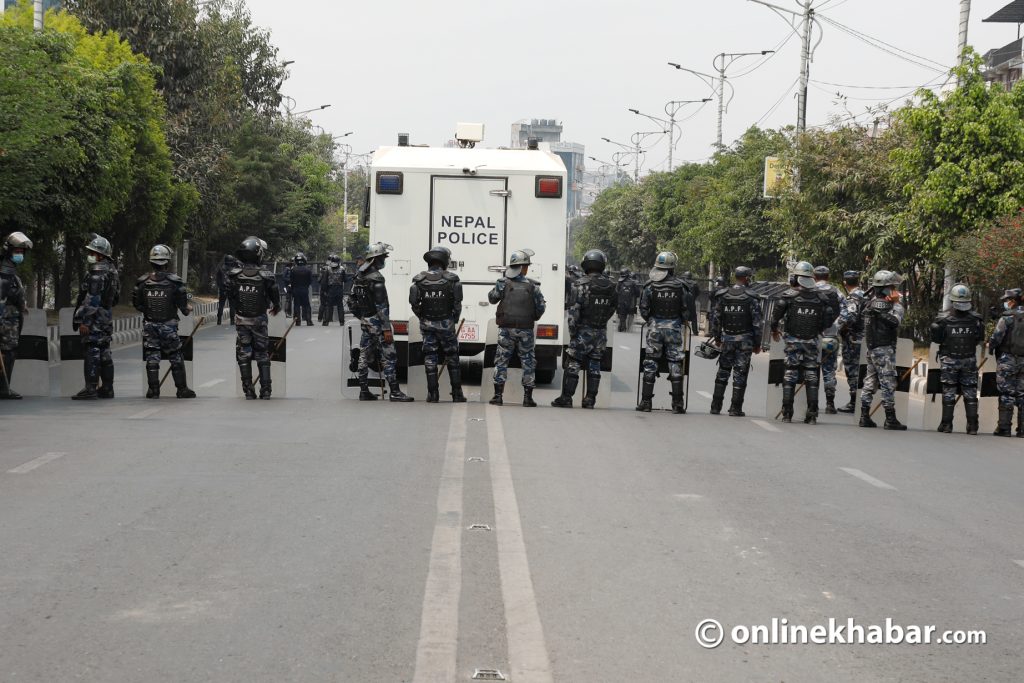Since it was Indra Jatra earlier this week, everyone was mesmerised by the loud and vibrant dance of Majipa(t) Lakhe around Kathmandu. But, some 10 kilometres away from the lively Kathmandu Durbar Square, the heart of the city, there was another Lakhe that came out to entertain and keep the traditions alive. This was Milpu Lakhe of Tokha.
Lakhe, in general, is a Newa word that refers to a kind of demon who, interestingly, is benevolent. It has a huge red face, is scary looking with prominent, bawdy eyes, big teeth and fangs and big (afro-like) hair. It is believed that a Lakhe scares off the evil spirits from its surroundings, and it is welcomed and considered friendly by the community.
While Majipa(t) Lakhe is considered to be a demon-turned-protector of the Kathmandu valley, Milpu Lakhe is considered a local demon that troubled the farmers and fought with them.
So what is interesting about this Milpu Lakhe of Kathmandu? A key factor may be that behind this Lakhe is an 18-year-old girl as opposed to the grown, bulky men that are usually behind the Majipa(t) Lakhe. The girl is Rasna Shrestha, a 12th grader and local of Thane Lachhi, near the Tokha Chandeshwori temple on the northern outskirts of Kathmandu.
The Milpu Lakhe

In the morning of August 23, Shrestha woke up to a call that asked her to be a Lakhe for the day. In the next 10 minutes, she was out of the house and sat to be dressed as the local Lakhe. This was the first time when Shrestha took the role. When people came to know about this young, female Lakhe, it created a buzz among the netizens.
Again, on Sunday, September 19, just as Majipa(t) Lakhe joined the Kumari Jatra procession, Shrestha as Milpu Lakhe was also making rounds in Tokha.
Milpu Lakhe is considered a local demon by the Tokha locals. According to the popular story, it is said there was a demon that troubled the farmers. “Troubled by the demon, a few farmers joined hands and went to the field at midnight to fight the demon. Together, they won over the demon. And since that day, the Lakhe procession in Tokha is taken out as a symbol of this win,” says Devraj Joshi, a local and advisor for the Shree Chandeshwori Bhajan Khala.

Another local and Khala advisor Bikram Shrestha adds, “It is a common belief that the Lakhe procession needs to be taken out every year. If we fail to take it out, locals believe that the Lakhe will once again haunt the locals and destroy their crops, like in ancient times.”
So, following their age-old traditions, Lakhe procession is taken out from the period of Gathemangal to Indra Jatra. It is accompanied by musical instruments [harmonium and dholak] played by the locals of different khalas (groups) and women singing hymns. After the Lakhe comes out on the second day of Indra Jatra, this character rests for the whole year whereas the musical instruments are played for the whole of Chaturmas, starting from Harishayini Ekadashi in June/July to Haribodhini Ekadashi in October/November.
During the procession, the Lakhe is showered with money by people who watch the performance from their houses. It also takes offerings from many local households.
A lady as the Lakhe

Shrestha was nervous yet ecstatic to find that she was to be the Lakhe that day. For her, her 12-year-old dream came true.
“Since I was six, I used to always gaze at the Lakhe and its movements whenever it was taken out for the year [around Tokha]. I used to imagine myself copying the steps and then I performed that one day in front of our group [Shree Chandeshwori Bhajan Khala]. The leaders there saw my performance. Probably impressed by it, they called me to be a Lakhe,” shares Shrestha.
But, the call in that August morning came as a complete surprise not only for Shrestha but also for her family and friends. Her elder brother Sanam says, “Yes, it was a complete surprise. I was out of the house for the whole day, from the morning. And, only when people showed her videos on social media, I got to know that she was the Lakhe for the day.” Her closest friends were equally surprised too.
“Only my parents knew. I rushed to become the Lakhe so I did not inform anyone,” says Shrestha.
The one behind the mask has to dance around the town, barefoot, dressed in red attire and a heavy mask for some five to six hours, so it is obvious that it is going to be quite tiring.
Sanam, her brother, also once tried to be the Lakhe. “I first tried being Bhakku, who walks along with the Lakhe here, around the town. But, I failed to capture and perform the dance as needed and was rejected. Bhakku’s dance is harder than that of the Lakhe. So, there was no way I could be the Lakhe. But, she [Rasna] picked up at once and is good at it.”
Hardships and hopes

Remembering her hardship, Rasna Shrestha also says, “A lot of times during the day, I did feel like giving up. My father [Bikram Shrestha] told me it would be hard and that I should rethink. But, I bore the responsibility already and I overcame that anxiety of failing. And, I do also think, I got the motivation because I was behind the mask.,” she shares.
But, her hardship bore her great results and people are all praising her. “Many people–locals and even my classmates–who never talked to me, came up to me and praised me for being the Lakhe, and for attempting and performing such a hard feat.”
“I did not feel anything on the day, but I was lethargic and rested all day on the day after,” she adds.
Regardless of that, she shares she has also been lucky to not get any negative or discouraging comments from anyone so far, though it was expected, given that the Lakhe is generally a man.
As per the traditions, the Milpu Lakhe is already at rest for the year now. But, Rasna Shrestha is pretty confident and willing to become the Lakhe next year too if given the chance.


















